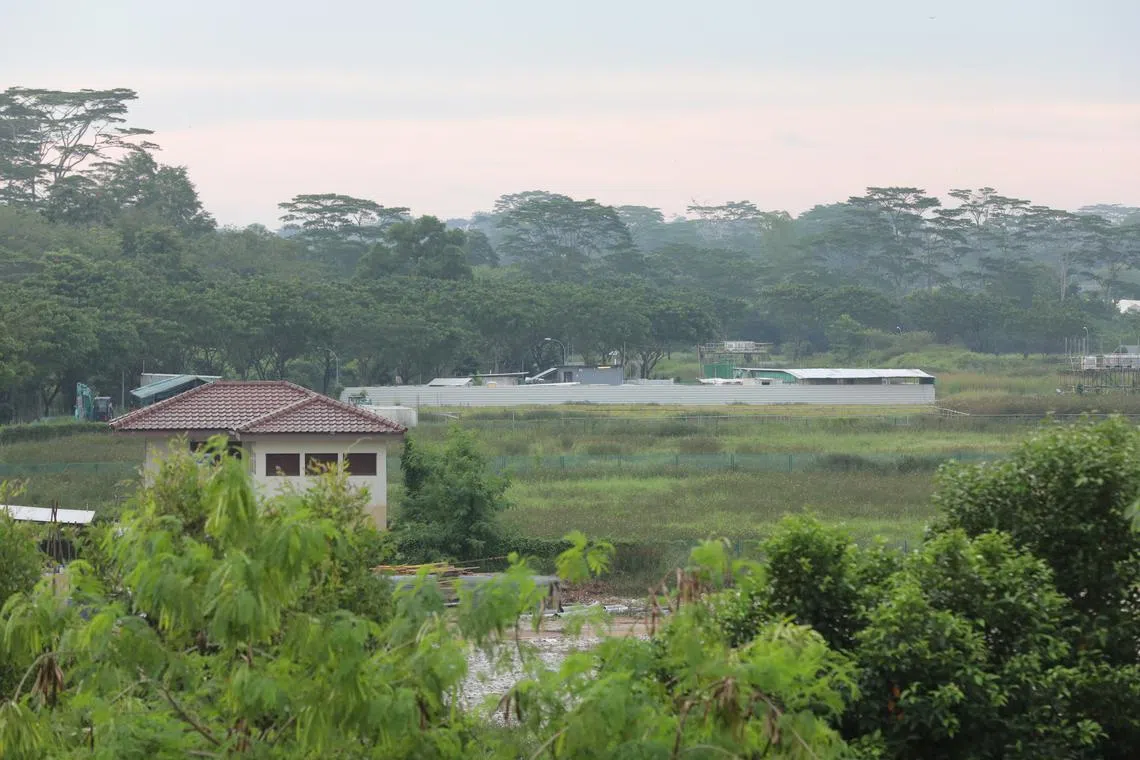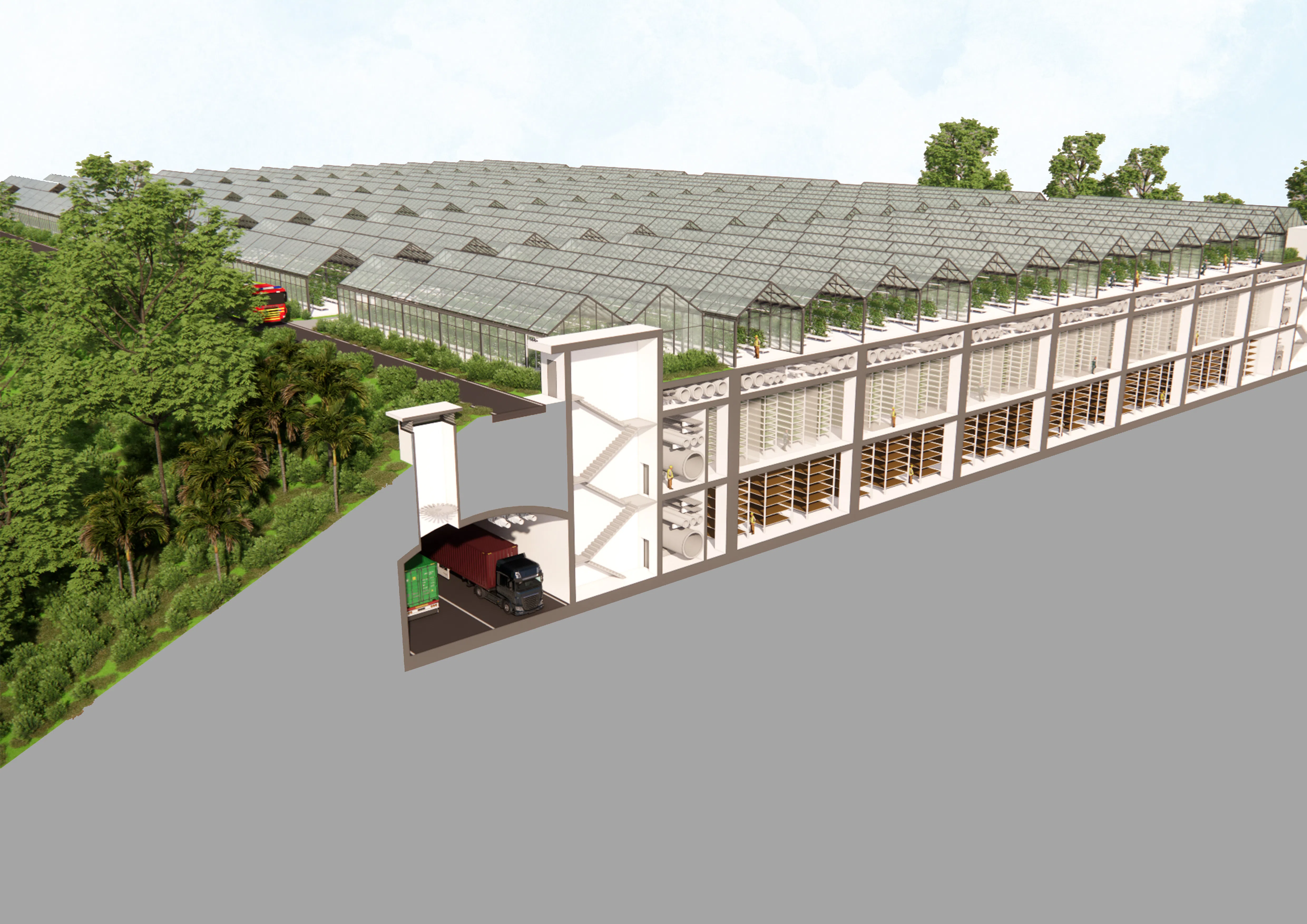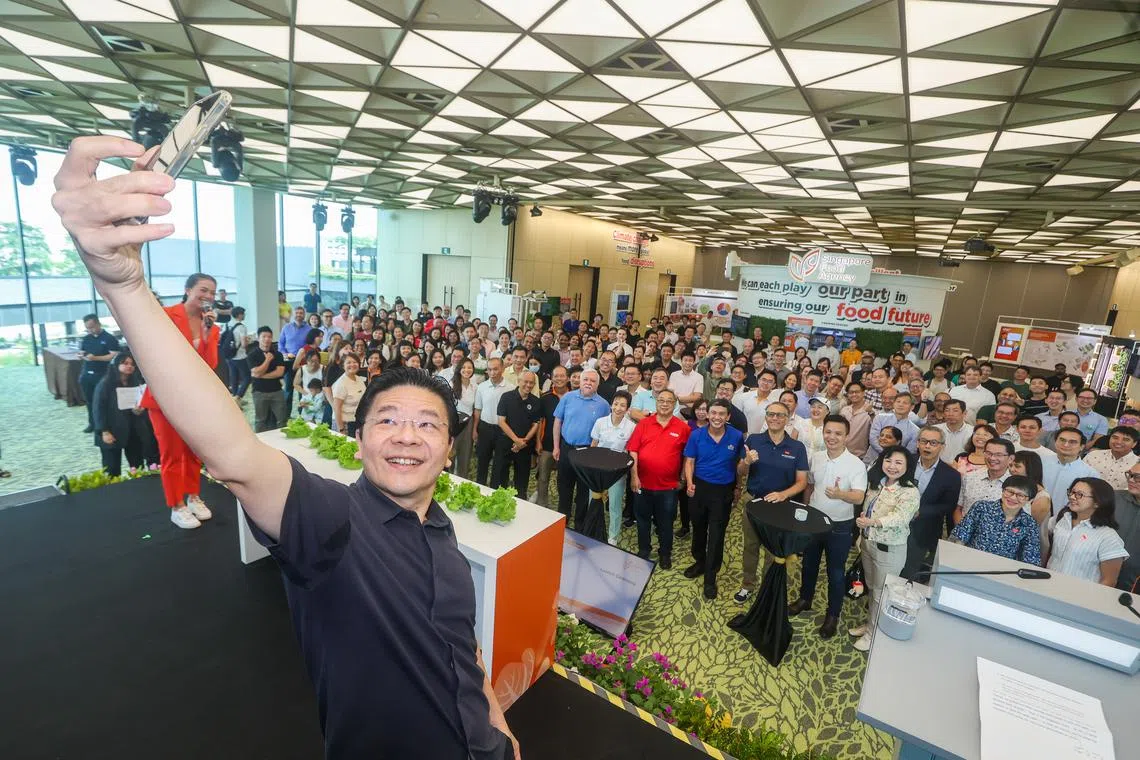Singapore Food Agency unveils options to boost output under Lim Chu Kang masterplan
Sign up now: Get ST's newsletters delivered to your inbox

The total land area involved will be about 390ha, consisting of three distinct districts – north, north-east and south.
PHOTO: ST FILE
Follow topic:
SINGAPORE – Home to a myriad of farms, Lim Chu Kang could soon become a high-tech, sprawling district producing leafy vegetables, mushrooms and fish in a climate-resilient, energy-efficient way.
Offering a peek into the future, an exhibition of the Lim Chu Kang masterplan
The options, which the Singapore Food Agency (SFA) is considering, include a “stacked farm approach” to intensify land use, growing produce in underground caverns to guard against rising sea levels, and using solar panels in greenhouses to harness renewable energy.
Speaking at the roll-out of the exhibition, titled Feeding Our Future: Building An Agri-Food Hub For All, Deputy Prime Minister Lawrence Wong said enhancing local food production is one of three strategies Singapore is embarking on to ensure food supply resilience.
This is especially crucial amid the ongoing Ukraine war and as climate change will continue to bring about “erratic and extreme” weather patterns, such as prolonged dry spells and more frequent intense rain.
“In 2024, we face the prospects of a severe El Nino effect on top of global warming – this is projected to lead to extreme heat and dry weather in many other parts of the world. This will further affect crop yields globally,” Mr Wong said.
The other strategies to safeguard food security are diversifying import sources and stockpiling essential items such as rice, frozen chicken and canned vegetables, he added.
As less than 1 per cent of Singapore’s land has been allocated for agricultural use, SFA conceptualised the Lim Chu Kang masterplan to transform the area into a “highly productive and resource-efficient agri-food cluster”.
The agency has been working with various stakeholders, including government agencies and the industry, to explore ideas that will encourage farms to grow more with less.
The total land area involved will be about 390ha, consisting of three distinct districts – north, north-east and south.
The north district will be developed first and demonstrate how high-productivity farming can coexist with nature.
The Straits Times has asked SFA when the Lim Chu Kang masterplan will be finalised.
The masterplan will also aim to preserve existing ecology and nature areas, and minimise the impact on nature.
The SFA is proposing the creation of a nature buffer, where the primary food production activities and existing nature areas are separated by a “transitional area”, where low-impact farming activities will be located.

A “stacked farm approach” can intensify land use.
PHOTO: SFA
Lim Chu Kang is home to several ecologically sensitive areas, such as the Sungei Buloh Nature Reserve and the Mandai Mangrove and Mudflat.
The stacked farm approach could consist of three layers, with food production in the basement for crops like mushrooms that do not require sunlight and would thrive in humid and cool conditions.
Indoor aquaculture farms such as those for fish and crustaceans could also be located here.
The first level could be tapped for food production that requires a closed and heavily controlled environment, such as indoor farms for leafy vegetables.
The top level would be ideal for food production requiring natural sunlight, such as in greenhouses for fruited vegetables like tomatoes.
With more land area that could potentially be lost to rising sea levels, as well as to ensure space for coastal protection measures, SFA will also consider creating farming space underground, instead of raising land levels, for instance.
Singapore’s mean sea level is projected to rise by up to 1m by 2100.

An artist’s impression of the “big box” approach where produce is grown in subterranean spaces to allow for coastal protection measures amid rising sea levels.
PHOTO: MKPL ARCHITECTS
SFA also envisions the district to be car-lite – in line with the Singapore Green Plan 2030
A centralised district cooling system will help cool farms and buildings efficiently.
The farming district will also look to efficient waste management, with a possible biogas plant to treat organic waste for energy, and for a storm-water harvesting system to be installed to capture water for farming use.
Glass solar panels could replace conventional transparent glass roofs. These agrivoltaic solar panels are designed to ensure light permeability while delivering optimal levels of sunlight for crop growth.
The public exhibition will be open until Wednesday. It includes family-friendly games and activities to help people understand the trade-offs that come with farming, as well as a farmer’s market selling fresh produce on Saturday and Sunday.

Deputy Prime Minister Lawrence Wong at the roll-out of the exhibition, titled “Feeding our Future: Building an Agri-Food Hub for All” on Sept 2.
PHOTO: LIANHE ZAOBAO
Mr Malcolm Ong, president of the Kranji Countryside Association, who was involved in consultations for the Lim Chu Kang masterplan, said he had called for the district to integrate some level of traditional, outdoor farming to retain its heritage value, instead of having the area be a completely high-tech one.
Drawing inspiration from Food Valley in the Netherlands, Mr Ong hopes that Lim Chu Kang could be a place where agritech companies, research institutes and universities are co-located to allow for greater collaboration.
“We also hope Lim Chu Kang will still be an inclusive space for the public, where they will visit, and walk around for leisure, kind of like the farms in Perth’s Margaret River,” he said.
Asked about his wish list for the upcoming Lim Chu Kang district, Mr Jack Moy, chief executive of local vertical farm Sustenir, said he hoped for energy costs to be lowered, and for the electricity to be greener – noting that soaring electricity prices are now the company’s largest cost of production.
Having a centralised food processing facility could also be beneficial for all the urban farms on-site – as resources could be pooled together to have the vegetables cut, packed, sorted and shipped to supermarkets.
“This will in turn help to reduce the costs of logistics,” Mr Moy added.
Finally, he hopes that the agrifood tech hub will offer resources for research and development work to further improve the efficiency of food production and to train a future pipeline of farming talent.
SFA in its masterplan has proposed a multi-tenanted facility to nurture start-ups, promote agritech research with automated harvesting, and have co-located processing to ensure freshness of the produce.
“Having a space for agritech companies will also allow for strength in numbers and foster greater industry collaboration,” said Mr Moy.


